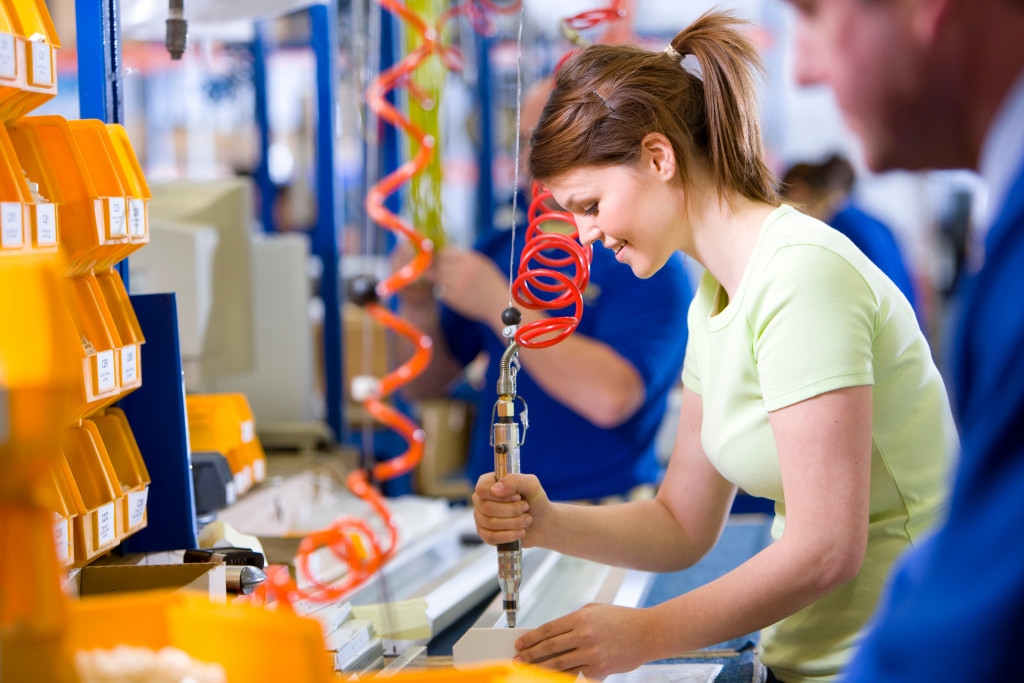- Technology is crucial for achieving manufacturing excellence, enabling businesses to operate more efficiently and remain competitive.
- Optimizing processes through software interface options like ERP and CAD software can reduce costs, minimize human error, and increase productivity.
- The Human-Machine Interface (HMI) and sensors/automation systems have revolutionized the manufacturing industry, improving accuracy and productivity.
- Investing in hardware interface options like PLCs can control everything from simple sensors to complex robotic systems, unlocking new levels of efficiency.
- While integrating technology requires significant investment, the long-term benefits include increased efficiency, reduced labor costs, and improved product quality.
In today’s fast-paced business world, manufacturing companies need to produce high-quality products quickly and efficiently. Streamlining the manufacturing process can help to achieve this goal by minimizing waste, reducing production time, and improving overall productivity. Businesses can stay competitive by optimizing their operations and utilizing the latest technology.
Streamlining a manufacturing business requires a systematic approach, which involves analyzing every step of the production process and identifying areas that can be improved. With digital transformation and technology-driven competitiveness, a clear focus on process optimization and efficiency is paramount for any manufacturing business.
This post will examine how manufacturers can streamline operations by embracing connected technologies—taking your processes to the next level efficiently while driving productivity in new directions.
Software Interface Options
Today’s technologically advanced world, software interfaces are crucial in determining the user experience. With the evolution of software engineering, the significance of software interface options has increased drastically. Software interface options for manufacturing businesses are crucial in streamlining operations and maximizing efficiency. Some popular options include:
Enterprise Resource Planning (ERP) Software
Enterprise Resource Planning (ERP) software is the cornerstone of modern-day manufacturing management. This powerful tool streamlines business processes by automating mundane tasks and optimizing production planning, inventory management, and supply chain management. By automating routine tasks, ERP software reduces the risk of human error, augments productivity, and helps businesses function more efficiently. Unsurprisingly, ERP software is highly regarded and quickly becoming indispensable in today’s economic landscape.
Computer-Aided Design (CAD) Software
The fast-paced manufacturing landscape, businesses require reliable and efficient tools to design and develop their products. Computer-Aided Design (CAD) software is crucial in this process, and its importance cannot be overstated. With CAD software, designers can create 3D models, simulate product performance, and conduct materials analysis, among other benefits.
This software streamlines the design process, allowing quicker and more accurate iterations of product designs. For manufacturing businesses looking to stay competitive and enhance their product development capabilities, investing in CAD software is a worthwhile strategic move.
Human-Machine Interface (HMI) System
The manufacturing industry continuously evolves, and one such innovation that has transformed the industry is the Human-Machine Interface (HMI) system. With the HMI system, human operators and machines can communicate seamlessly, leading to increased productivity and efficiency in the manufacturing process.
This system allows operators to interact with machines via a graphical interface, reducing the need for physical buttons and switches. From controlling processes to monitoring equipment performance, the HMI system has revolutionized how people interact with manufacturing machines.

Hardware Interface Options
When it comes to hardware interface options, there are several choices available for users.
Programmable Logic Controllers (PLCs)
In manufacturing, Programmable Logic Controllers (PLCs) have become essential tools for businesses looking to streamline their operations and remain competitive. These highly versatile devices can monitor and control everything from simple sensors to complex robotic systems, making them invaluable assets to any manufacturing enterprise.
With the proper support and guidance, businesses can leverage the power of PLCs to unlock new levels of efficiency and productivity, paving the way for continued success in an ever-changing marketplace.
Sensors and Automation Systems
Using sensors and automation systems has revolutionized the way manufacturing businesses operate. These technologies enable companies to streamline production, reduce costs, and improve accuracy and productivity. Sophisticated sensors can detect minute temperature, pressure, or humidity changes, allowing machinery to function optimally without human intervention.
Likewise, automation systems can minimize human error and increase the speed and precision of processes.
Cost and Implementation Considerations for Technology Integration in Manufacturing
Cost is one of the most critical factors when integrating technology into manufacturing processes. Upgrading and implementing new technologies can be a significant investment, but the long-term benefits outweigh the initial expenses.
It’s essential to carefully analyze the potential return on investment, including increased efficiency and productivity, reduced labor costs, and improved product quality. Implementation and integration costs must also be factored in, including training, support, and maintenance expenses.
Despite the challenges, technological integration can provide a significant competitive advantage in the marketplace, making it a worthwhile investment for those in the manufacturing industry.

Manufacturing excellence requires integrating technological solutions that accurately track, monitor and maximize efficiency for desired productivity levels, profits, and customer satisfaction. Choosing the best interface option between enterprise software, CAD/CAM software, HMI systems, and hardware interfaces like PLCs and sensors help to streamline operations and ultimately drives success.
By considering budget constraints while weighing cost versus performance, manufacturers can unlock a range of automated production possibilities with smart investments in technology. While integrating manufacturing technologies can seem overwhelming at first glance, properly implemented solutions will profoundly impact the entire operation.

